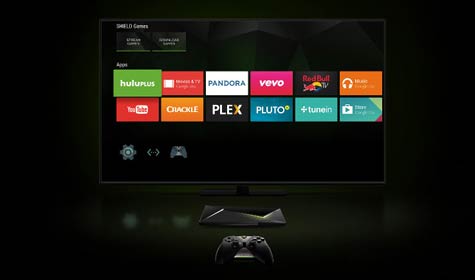This week, I’m taking time off from enterprise technology to hang out at the Game Developers Conference in San Francisco. A number of interesting announcements and events occurred at the show but one that really caught my eye was the announcement of the NVIDIA Shield Gaming Console. We’ve been expecting gaming to move from local content to hosted content, as DVDs did, for some time, much as we’ve been expecting PCs to move from localized systems to hosted cloud services.
It strikes me that, from the perspective of the user, this new gaming console could be the best thin client that has ever been in market.
Let me explain.
The PC Move to the Cloud
A number of us believe that, for much of the market, people will eventually run their software in the cloud and, if you are on a mobile device, you are very likely to be doing that today since a lot of the business software simply won’t run on a smartphone or tablet.
This means that, at some point, we’ll get the unique benefits that Sun’s Scott McNealy promised us with thin clients nearly two decades ago: utility-like reliability; the ability to retain state (you can turn off one machine, go home, power on, and be exactly where you left off); higher security; more power efficiency; and a ton less patch, maintenance, and replacement/upgrade aggravation.
Strangely, we’ve been more aggressive at moving server loads into the cloud, which you’d have thought years ago to be more difficult, than PC client loads. This is because users often require far lower latency.
Cloud Gaming
But if you think business users have low latency issues, they’re nothing like gamers. Here, a few milliseconds can be noticeable, particularly if you are in a competitive first-person shooter. A few years back, the then-head of Microsoft’s gaming group, Robbie Bach, argued with me that cloud gaming simply wouldn’t work.
Since then, services like OnLive have launched and, while not especially successful yet, they have showcased that this could be done (and eventually they provided a cloud hosted business solution). Soon after, services like Mainframe2 launched, focused exclusively on business. This was followed by NVIDIA’s launch of Grid, one of the missing links, a server specifically designed to provide high desktop performance from cloud service providers.
IBM, VCE, AWS and others have integrated grid servers into their cloud services to handle desktop and workstation virtualization.
But we are, or were, missing an ideal client for these ever more enhanced servers and cloud services.
Ideal Client
The ideal client has to run some software locally because users, whether we like it or not, have personal apps they want to run. If we deny them this capability, they tend to go back to using PCs. This means that the typical thin client is simply too thin and restrictive. But a PC is often overkill because you don’t need or want to run the business applications the firm wants to stay secure and centrally managed locally and you really don’t want users to have the temptation.
A client that can run a large number of apps but doesn’t run the business applications would seem ideal — one that is inexpensive, and one that doesn’t require a great deal of custom overhead.
This suggests a client running a mobile OS, like iOS, Android, QNX (BlackBerry), or the Phone version of Windows 10 would be ideal. These typically already have clients that will run compatible browsers or mobile clients into enterprise products that are hosted, and they will also run local apps, but they don’t run legacy Windows apps, which you’d typically want to host.
Wrapping Up: The NVIDIA Shield Console
The NVIDIA Shield console runs Android Lollipop, allowing it to run anything that will run on Android, and it runs a top browser. It has the power to keep the user happy; it is designed to work with Grid to lower latency and assure a good gaming experience so, by default, it should excel at running hosted applications. It has the maintenance and power requirements of a small tablet, which is to say it is more like an appliance than a PC, and it kind of looks cool (which I know IT doesn’t care about but can make a difference when trying to get users to try something new).
And while the initial positioning of the product as a gaming console will cause IT folks to have some trepidation, remember that the iPhone was initially presented as a consumer-only device. Today, companies are up to their armpits in them.
So we could eventually see the NVIDIA Shield console as the preferred replacement for our desktop PCs. When did you have a better business excuse to pick up a gaming product to play with?
Rob Enderle is President and Principal Analyst of the Enderle Group, a forward-looking emerging technology advisory firm. With over 30 years’ experience in emerging technologies, he has provided regional and global companies with guidance in how to better target customer needs; create new business opportunities; anticipate technology changes; select vendors and products; and present their products in the best possible light. Rob covers the technology industry broadly. Before founding the Enderle Group, Rob was the Senior Research Fellow for Forrester Research and the Giga Information Group, and held senior positions at IBM and ROLM. Follow Rob on Twitter @enderle, on Facebook and on Google+




